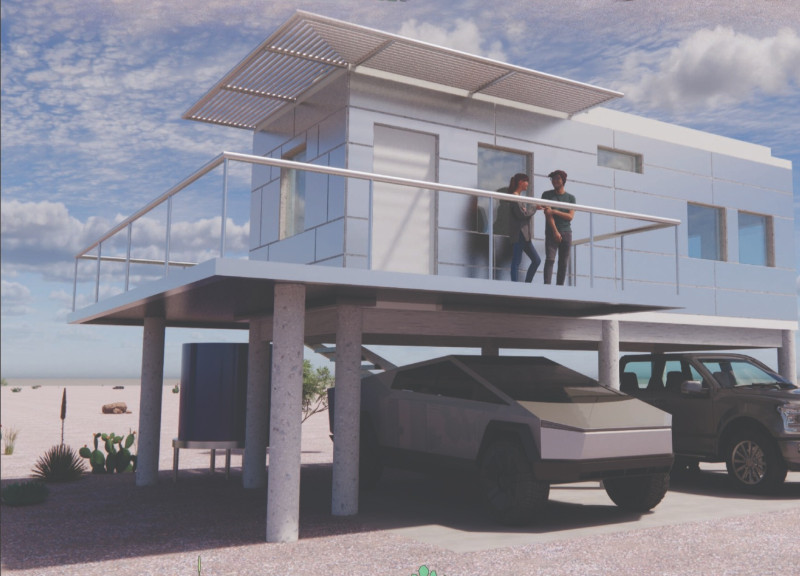5 key facts about this project
The Las Vegas Deserted Home is located in the vast Mojave Desert, designed to provide a self-sufficient living space for those pursuing an off-grid lifestyle. It aims to promote sustainability and independence, incorporating essential systems that allow residents to exist outside conventional urban infrastructure while addressing the unique challenges posed by the desert environment.
SUSTAINABLE ENERGY SYSTEMS
At the heart of the design are photovoltaic panels, which supply renewable energy, significantly decreasing the need for traditional electricity. This focus on sustainability is complemented by a refillable water tank, meeting the residents' needs for sanitation and hydration. The home also includes a septic tank for wastewater management, supporting a comprehensive off-grid living experience.
CLIMATE RESPONSE STRATEGIES
To tackle the extreme conditions of the desert, an air conditioning unit is part of the design, ensuring a comfortable indoor environment. The reflective aluminum shell serves to reduce heat absorption, enhancing energy efficiency. This choice of materials not only improves comfort but aligns with the objective of minimizing energy use in a challenging climate.
STRUCTURAL RESILIENCE
Wind and dust storms are common in the region, and the home's design factors in these environmental realities. It is elevated on reinforced concrete columns, providing the necessary stability and strength to withstand severe weather. This elevation also encourages airflow through the structure, further contributing to a comfortable living space.
INTERIOR LAYOUT AND FUNCTIONALITY
The layout is practical, featuring distinct areas for the kitchen, living space, bedroom, and bathroom. This design maximizes usability in a compact area, allowing residents to navigate their daily routines with ease. Each space is arranged to support a functional lifestyle while maintaining comfort.
The careful integration of these elements creates a home that not only fulfills the basic requirements of its residents but also enables them to engage fully with the surrounding desert landscape.



















































